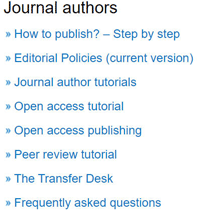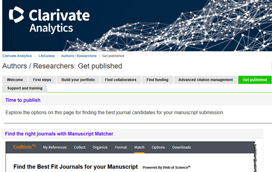
What about preprints?
Have a look at the slides and listen to the talk on Preprints: A practical guide by Jessica Polka [Australasian Open Access Strategy Group OPen Access Week 2020].
- Double check journal polices - use SHERPA/RoMEO and the Transpose database (journal policies on peer review, co-reviewing and preprinting)
- Choose your server
- Choose your license
- Convince your co-authors
- Upload code, data or deposit reagents
- Post your preprint
- Request feedback
For more information see the ASAPbio website.
Choosing a journal
- Consider the following when thinking of where to publish:
- Look at the journals you have used in your reference list
- Who are you trying to reach?
- Does the topic of your article match the target audience and focus of the journal?
- Does the journal conform to international quality standards?
- Selecting a quality publisher - A useful overview from the Royal Society Te Apārangi
- ThinkCheckSubmit checklist to choose trusted journals.
- BMJ Author Hub How to choose a journal
- Be iNFORMED checklist from Duke University Medical Center Library. 'checklist to help potential authors determine whether a journal or publisher is potentially predatory or of low quality'
- Use Ulrichsweb, an international directory of serial publications, to see if a journal is listed and if it is, which databases index the journal.
- Do a quick search in Scopus and Web of Science Core Collection, maybe type in the proposed title of your paper as a topic search. In the results list look at the filters on the left side of the screen as these rank the journals by number of papers on your topic and also have numbers of papers published by topic category. These can give you an indication and ideas on which journals to submit your manuscript.
- Journal impact. To find journals in your area see Research metrics which has various resources to rank journals by eg impact factor. Be aware of journals who 'game' metrics. See also JournalSeek which lists journals by topic area. Use the Source tab in Scopus to check a journals metrics or to see a ranking of journals by subject area.
- Predatory publishers.
See- Beall's updated list.
- Talk with colleagues and look on discussion forums such as ResearchGate.
- Lopez E, Gaspard CS. Predatory Publishing and the Academic Librarian: Developing Tools to Make Decisions. Medical Reference Services Quarterly. 2020;39(1):1-14. DOI:10.1080/02763869.2020.1693205 Information on ThinkCheckSubmit, Beall's list, Ulrichsweb, PubMed/PMC/Medline and includes STOPP checklists (unvalidated)
- WAME World Association of Medical Editors Identifying predatory or pseudo-journals
Suggest a journal to match the topic of your paper
There are a number of products that will try to match your paper title and abstract to suggested journals to submit your manuscript to:
- Springer Journal Suggester
- Clarivate Manuscript Matcher specifically works with EndNote. For alternate access and a list of journals in Web of Science use Browse search and explore journals indexed in the Web of Science
- JANE (Journal, Author, Name Estimator)
- JournalGuide
- Elsevier® Journal Finder
- Wiley Find the journal that's right for your research (beta)
 | SpringerNature have a useful
|
 | Getting published resource from Clarivate on how to use Manuscript manager in Endnote, how to use Journal Citation Reports and Web of Science to identify journals publishing on your topic |
 | How to identify the right journal to publish in. Free resource from Elsevier but you will need to register. |
Edit page



